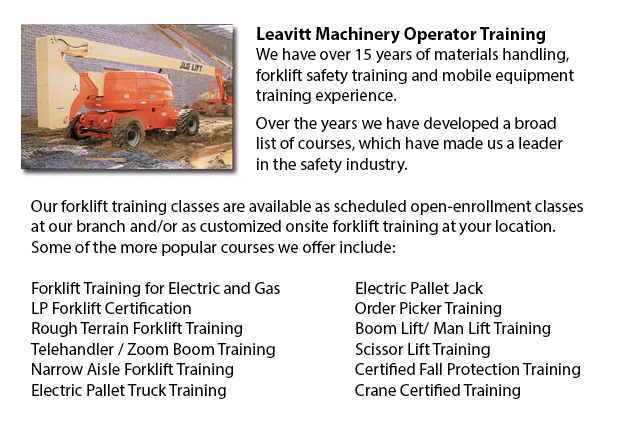
Boom Lift Operator Training British Columbia - The cherry picker work platform is a type of work platform, that would typically have a platform or bucket at the end of a hydraulic lifting system. The machine is also called a boom lift, man lift, basket crane or hydraladder.
The platform or bucket is usually mounted on the rear of a large vehicle such as a truck, that is sometimes called a bucket truck. A self-moving platform, stand-alone trailer or flat back pickup van can likewise be used. The worker stands in the bucket and works from there. The person within the bucket normally comprises an upper set of controls allowing control of the bucket's position. The bucket's reach could be extended on various models by telescoping in order to adjust the lifting arm. Safety controls which are automatic prevent tipping. Articulated boom lifts are recommended for working within tight spaces or when it is required to clear obstacles.
Cherry pickers, as the name suggests, were first made for picking fruit at high levels in trees. These machines are usually used in other businesses such as mining, exterior painting and construction. Sometimes they are used for cleaning windows on high building. The machines are used to service telephone, cable television and electrical equipment on utility poles. Occasionally, firefighters use cherry pickers, called snorkels, when ladders are insufficient. During Christmas season, civic workers can be seen in cherry pickers hanging lights and banners.
Boom Lift Operator Safety Training
The industry suggests Safety Awareness Training meets standards set by your local regulations. Program covers safe operation methods through a combination of hands-on and classroom components.
Sessions consist of the following topics: general equipment safety considerations; current regulations and applicable concerns; features of boom lifts; fall protection, different stationary work platform and scissor lifts.
Likewise included are the different lift operator's responsibilities, like for example: workplace checks; function test procedures; knowing and avoiding hazards; equipment manufacturer's instructions and pre-operation check procedures.
-
Warehouse Forklift Safety Training British Columbia
Warehouse Forklift Safety Training British Columbia - The corporation would face claims for liability when damage and injuries are sustained in an accident at the workplace. Warehouses can be a hazardous place to work for its workers, making employee... More -
Loader Operator Certification British Columbia
Loader Operator Certification British Columbia - Courses Offered For Getting Loader Operator Certification - Certification for forklifts are required to guarantee the safe operation of forklifts for those employers in industrial, warehouse or constru... More -
Crane / Overhead Crane / Self-Erect Crane / Truck Mounted Crane / Hydraulic Cranes Training in British Columbia
Bridge cranes or likewise called overhead cranes are actually a type of industrial material handling crane making use of a line and hook device that runs on a horizontal beam running along two widely separated rails. Numerous overhead cranes could be... More -
Scissor Lift License British Columbia
Scissor Lift License British Columbia - The operation of scissor lifts carries an inherent chance of danger. Whichever type of powered machine requires correct handling to prevent accidents causing injury or damage. Companies need to make certain tha... More -
Heavy Equipment Training Schools British Columbia
Heavy Equipment Training Schools British Columbia - There are a lot of heavy equipment training schools to select from. If you want to get to the best, it is important to check various aspects of the school in order to ascertain the level of educatio... More -
Telehandler Training British Columbia
Telehandler Training British Columbia - Telescopic handlers usually called telehandlers for short, are an extremely popular piece of heavy construction equipment. They are commonly utilized in the construction and agricultural trades. These machines... More -
Forklift Training Courses British Columbia
Forklift Training Courses British Columbia - When forklift operator safety training is tailored for illiteracy, training time is lessened by 50%. Forklift training certification, lift-truck operator driver safety training evaluation, and train the tr... More -
Heavy Equipment Operator Training British Columbia
Heavy Equipment Operator Training British Columbia - Heavy equipment operator training facilities which provide quality standards in the business, providing field performance work and added machinery training are highly sought after training features... More

Forklift Training British Columbia
TOLL FREE: 1-888-254-6157
forklifttrainingbritishcolumbia.com
Email Us
About Us


